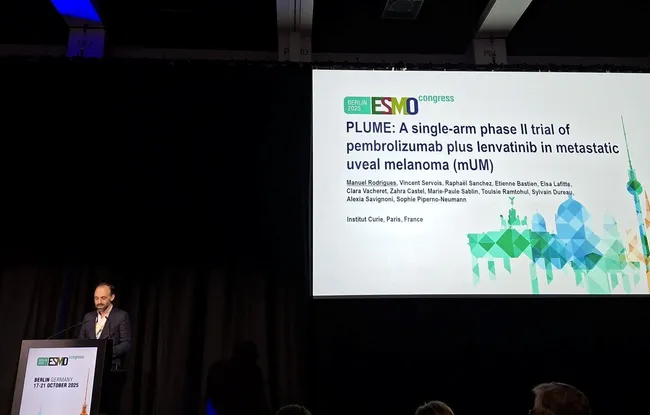- Home >
- Institut Curie News >
- Michel Bornens, a historic pillar of the Research Center
I would like to pay tribute to this great scientist, recognized in France and throughout the world. He was a key figure at Institut Curie who built fundamental bridges between biology and physics, paving the way for a number of multidisciplinary projects at the Research Center,
explained Prof. Alain Puisieux, Director of the Institut Curie Research Center.
Throughout his career, Michel brought an original vision of cellular biology, based on detailed knowledge of the diversity of living organisms and on the use of multidisciplinary approaches. He also trained and mentored young scientists, who are now the heirs of this extraordinary scientist,
added Franck Perez, Director of the Cell Biology and Cancer unit (CNRS UMR144/Sorbonne University/Institut Curie) at Institut Curie.
A graduate of AgroParisTech, an agronomy school, but not very motivated by a career in agronomy, Michel Bornens devoted himself early on to basic research and to the study of the dynamics of cells and their compartments. During his thesis (at the time a “State” thesis), which he defended in 1969 at the Center for research on normal and cancerous cells at Villejuif, during his postdoctoral fellowship at the University of Madison in Wisconsin, USA, Michel Bornens worked on the biochemistry of proteins and lipids of the nuclear membrane of the liver cells.
When he returned to France, he joined Institut Pasteur and continued to work on nuclear membranes. This is where he observed that the centrosome - a small organite involved in the nucleation of microtubules in cells in interphase and in the formation of the mitotic spindle during cell division - remained attached to fractions of purified nuclei from lymphoblasts even after treatment using a detergent.
Michel Bornens then became fascinated by the centrosome. Along with his team, first at the Cytology Center at Ivry-sur-Seine, then at the Center for Molecular Genetics in Gif-sur-Yvette, he developed a number of tools and experimental approaches ranging from biochemistry to electronic microscopy, enabling him to study the structure and function of the centrosome.
In 1995, at the request of Prof. Daniel Louvard, director of Institut Curie Research Center, he was involved in the creation of the Compartmentalization and Cellular Dynamics unit (CNRS UMR144/Sorbonne University/Institut Curie), which will be headed by Jean-Paul Thiery. His team continued to study the centrosome with new approaches on living cells and “normalized” cells cultivated on adhesive micro-patterns. Michel Bornens was also interested in the role of the physical parameters underlying the function of the centrosomes, and, along with Jacques Prost, director of the CNRS UMR168/Sorbonne University/Institut Curie unit, would initiate the extraordinary development of Institut Curie’s Physics and Biology programme.
Following his retirement in 2007, he joined Bruno Goud’s group in UMR 144, as emeritus researcher. His final years were devoted to highly original projects, based largely on his scientific body of work and his considerable scientific culture, on the evolutionary significance of the appearance of the primary cilium/centrosome in metazoans, and to exploring the idea that biological evolution is in fact a process at the cellular level.
Short biography proposed by Bruno Goud, head of the Molecular mechanisms of intracellular transport team (Cell Biology and Cancer unit; CNRS UMR144/Sorbonne University/Institut Curie) and former director of UMR 144.
Find out more
► Autobiography of Michel Bornens
► Michel Bornes and Franck Perez on the radio program "La tête au carré" on the France Inter station
► Michel Bornes on the CNRS EfferveSciences program
► Au commencement était la cellule talk



